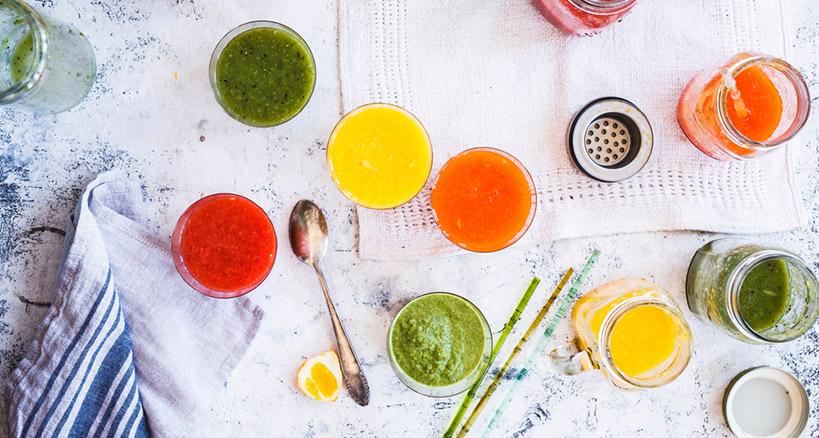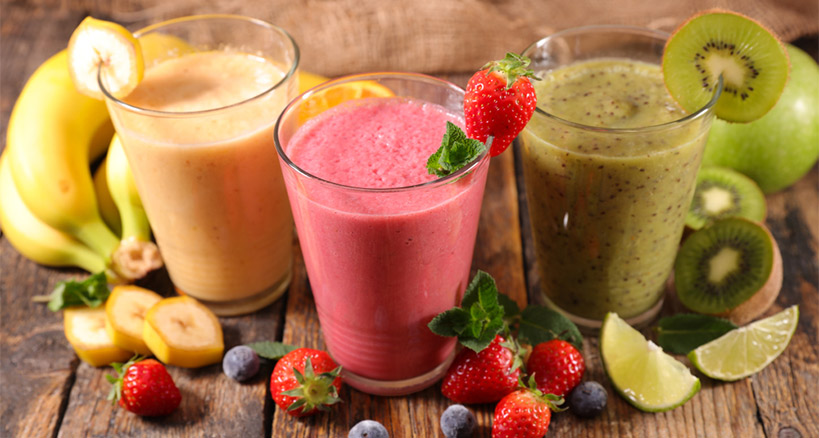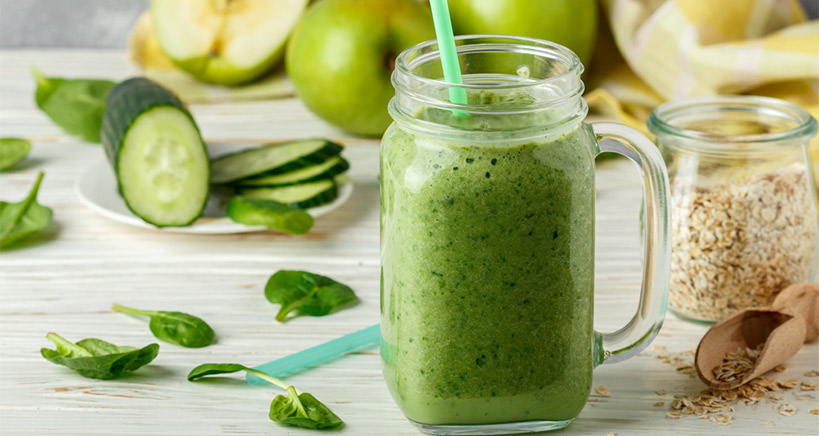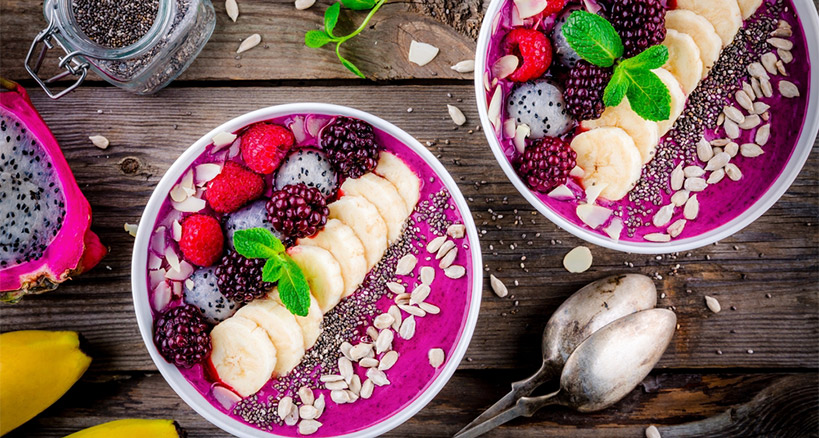
Cater With Vegetable-Based Drinks
An important part of any catered event is quenching your guests’ thirst. Nowadays it’s not enough to place a few bottles of sparkling water or Coke on each table; a beverage station – serving hot perked coffee, freshly brewed tea, and blended drinks that are created on the spot – is a feature that no event can do without. Smoothies and shakes have long been part of a caterer’s beverage repertoire, as they allow guests to customize their beverages with ingredients of their choosing. Now, however, with the arrival of warmer months, along with the increase in healthier menu offerings, it’s time to liven up your beverage menu by introducing your guests to fresh, bright, vegetable-based smoothies.
Eating and Drinking Healthy is Here to Stay
There are basically two options for including a beverage bar at the events that you cater: you can handle all the drink-making yourself (with staff that you hire and train), or you can outsource to a company that specializes in serving beverages at catered events. Either way, the drinks that you serve at your upcoming events will have to conform to the current trends: healthy, sustainable, and seasonal. When it comes to drinks, this means that your clients will be looking for freshly squeezed juices and blended smoothies made from organic, local, and seasonal fruits and vegetables. Many people are trying to incorporate more vegetables in their diets, and juicing is a great way to capture a lot of vitamins and minerals from raw produce that might otherwise be lost during cooking.
Recent surveys indicate that the plant-based foods sector grew more than 8 percent in 2017, and the plant-centric drinks category is up 3 percent since last year, significantly outpacing sales of cow’s milk over the same period. According to the National Restaurant Association’s 2018 “What’s Hot” survey, vegetable-based cuisine – sometimes referred to as “vegetable-forward” – is the third-most popular culinary trend. “Plant-based” is more than just a buzzword or a passing fancy. It’s a lifestyle choice that is driven by consumer interest in both personal wellness and concern for our planet, and it’s here to stay.
A New Plant-Based Outlook
Hope Lee is a senior analyst for Euromonitor International, an independent provider of strategic market research. In an August 2016 podcast, Lee discussed the fact that consumption of plant-based foods and beverages is increasing because consumers tend to perceive them as natural, safer, and more sustainable than animal products. She points out that we can see the subtle shift away from meat-centered meals in cooking magazines, health books, restaurant and catering menus, and cookbooks. As the prevailing winds of healthy eating and drinking strengthen, new terminology emerges, such as the creation of the word “flexitarian,” that describes a person who chooses a predominantly vegetarian diet, but who does still eat some meat. The emergence of the flexitarian lifestyle, Lee says, has created opportunities for innovation in the plant-based food industry, in which “manufacturers are actively looking for and exploring traditional plants to make them into delicious and nutritious food and beverage products.”
Michele Simon, CEO of the Plant-Based Foods Association agrees. “The steady growth of the plant-based food and beverage industries shows that consumers continue to shift away from animal products toward plant-based options,” she says, and quotes a recent report that estimates annual sales of plant-based beverages at $2 billion, with that figure forecast to climb to $3 billion by 2020.

Milk: Not Just From Cows
Consumers seeking plant-based alternatives to traditionally animal-based nutritional sources are increasingly gravitating toward non-dairy “milks”: beverages made from nuts, soybeans, legumes, and seeds that are marketed as cow’s-milk replacements for use with breakfast cereals, coffee, smoothies, and cooking, and for drinking on their own straight from a glass.
In an article entitled, “Fake Moos,” the Slate website points out that the milk consumption of Americans is on a downward slide, while “our appetite for creamy, plant-based milk substitutes made from soy or almonds has been sharply on the rise.” This trend is giving rise to lawsuits brought by the country’s dairy farmers who say, “It is misleading and illegal for manufactures of these items [non-dairy milk products] to profit from the ‘milk’ name. … They are unable to match the nutritional makeup of the product they mimic, yet they continue to be marketed as milk.”
Legalities and nomenclature aside, milk alternatives continue to gain traction. Among the four leading types of non-dairy milk – soy milk, almond milk, coconut milk, and rice milk – soy milk is considered the most nutritional, as it packs the same amount of protein as cow’s milk. However, there are great options for anyone who is allergic to soy, such as almond milk, which is steadily closing the gap behind soy milk. And, as competition in the non-dairy, plant-based-milk market grows, there is a proliferation of flavors and innovations in the industry, such as the blueberry-banana almond-milk beverage from Bolthouse Farm – “The Future of Milk – and Trader Joe’s Pumpkin Spice almond milk.
Catering With Veggie-Based Drinks
While most people have embraced the fruit smoothie trend, not everyone is ready for a full-on vegetable shake. Nonetheless, if you encounter a client who is on the fence about serving guests veggie-smoothies, point out that they can get more than half of the recommended daily amount of vegetables in one drink — something most people don’t even get in a day. But, more importantly, point out that they are simply delicious. Let your customers peruse articles that have various recipes and allow them to choose a few drinks that appeal to them while of course, sampling some of your own offerings.
You can suggest smoothies that are big on tasty vegetables while keeping their signature sweetness. So, for instance, you can offer tropically inspired smoothies that contain a combination of finely shredded carrots, frozen mango slices, strawberries, mango juice and ice; or green and zingy shakes that have liquefied carrots, spinach, apple and pineapple chunks, and apple juice, and a sliver of fresh ginger for a refreshing zing.

The Hamilton Beach Everyday Good Things website (they’re the blender people), features a recipe for a fabulous green smoothie that also contains sweet peaches and bananas for the perfect combination of flavors:
Peach-Banana Super Veggie Green Smoothie Recipe
Ingredients
- 8 ounces unsweetened almond milk
- 1 frozen banana, sliced and slightly thawed
- 2 small peaches, pitted
- The vanilla from 1 vanilla bean or 1/4 teaspoon vanilla extract
- 1 cup frozen broccoli florets
- 2 cups baby kale (or regular kale or spinach)
Directions
- Start by adding the liquid to your blender, followed by the soft fruit.
- Add the greens to your blender last.
- Blend on high for 30 seconds or until the smoothie is creamy.

Smoothie Bowls – Yes, It’s a Thing
Just when we thought we were staying ahead of the health/vegetable trend by serving green smoothies, along comes smoothie bowls to up the health ante. Smoothies served out of a bowl — also known as smoothie bowls — are the new darlings of Instagram and Twitter and they are turning up in endless configurations at juice bars and on breakfast menus across the United States. So, if you’re looking to become the most cutting-edge caterer around, add smoothie bowls to your menu and give your reputation a boost.
Just like smoothies that are poured into a glass, smoothie bowls are made up of blended fruits, vegetables, juices or milks. In a bowl, smoothies can be made thicker and sprinkled with a variety of toppings (that can’t get sucked up through a straw). The base incorporates thickeners like avocado and bananas, and toppings can be anything from sliced fruit and nuts, to seeds and granola. Packed with a range of creative fruit and vegetable combos, smoothie bowls can be amazingly nutrient- and protein dense. Popular spots like the Juice Press, focus on protein-centric smoothies made with Acai, blueberry and coconut water to highlight the sweetness. At your next catered event, setting up a smoothie-bowl bar that includes a couple of base options with an arrangement of toppings will make the party – and you – the talk of the town.
Blend Those Veggies
Serving vegetable-forward shakes and smoothies at your catered events will show potential clients that you are able and willing to go with the flow and that you’re always on top of the latest food trends. Additionally, to really highlight your cutting-edge side, offer healthy, delicious and fun smoothie bowls, and watch your reputation and your business soar.